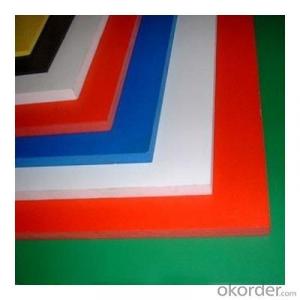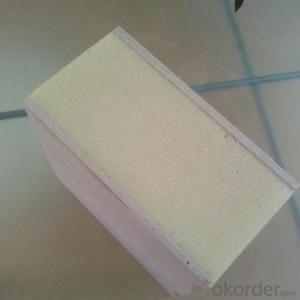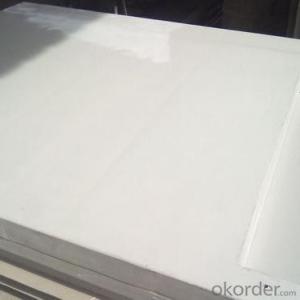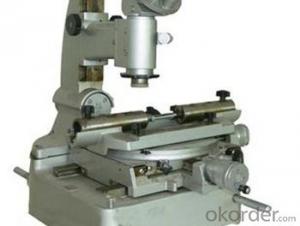FRP pultruded grating with Anti-corrosion and anti-rust and best quality on sales
- Loading Port:
- Tianjin
- Payment Terms:
- TT OR LC
- Min Order Qty:
- 5000 m.t.
- Supply Capability:
- 100000 m.t./month
OKorder Service Pledge
OKorder Financial Service
You Might Also Like
PRODUCT DESCRIPTION
Pultruded grating is made by a particular assembly process, which using “I” shape as its main load-bearing and special rod to go through the bearing bar. Pultruded grating include the standard grating and the custom grating, the custom grating can be designed to meet customer’s requirement or special using condition by changing the shape, size and space of the bearing bars, the surface can be covered with lozenge panel, grit panel, or added the anti-slippery sand directly.
FRP pultruded grating has the most characteristics of molded grating, but it has its distinct advantages, it has very high fiberglass content in the loading direction, so it has very high load capability, it has more superiority when used at wide span, so that the basic support will be decreased and the project cost will be reduced accordingly.
SPECIFICATION
Thickness (mm) | Bar width (mm) | Open space (mm) | Open rate (%) | Approx weight (kg/m |
25.4 | 15.2 | 22.8 | 60 | 13.2 |
25.4 | 15.2 | 15.2 | 50 | 15.9 |
25.4 | 15.2 | 10.1 | 40 | 18.5 |
25.4 | 40 | 10.8 | 21 | 14.5 |
38.1 | 15.2 | 22.8 | 60 | 15.8 |
38.1 | 15.2 | 15.2 | 50 | 19.1 |
38.1 | 15.2 | 10.1 | 40 | 22.4 |
50.8 | 25.4 | 25.4 | 50 | 16.6 |
50.8 | 25.4 | 12.7 | 33 | 21.1 |
CHOICE FOR PULTRUDED GRATING
Resin: GP resin, ISO resin, VE resin, Phenol resin
Color choice: Yellow, gray, green, custom color
Surface choice: Groove surface, grit surface, lozenge cover surface
FEATURES
a. Anti-corrosion and anti-rust
b. Light weight and high strength
c. Anti-flammable
d. Anti- fatigue
e. Safe and anti-slippery
f. . Good economic benefit
g. Easy of maintenance
h. Excellent electromagnetism property
FIELDS SERVED
Sewage treatment,
water supply and drainage,
chemical industry,
oil industry,
power engineering,
pulp and paper,
construction engineering,
spinning, marine engineering.
APPLICATION
Operation terrace,
stair walkway,
ground floor,
trench cover,
sidewalk,
foot bridge,
equipment safety fence,
scaffold.
COMPANT DESCRIPTION
CNBM,China National Building Materials Group is a state-owned enterprise in charge of administrative affairs in china building materials industry. Established in 1984, CNBM is a large group corporation of building materials with total assets of 25 billion RMB and a total staff of 30,000.CNBM now owns 200 subordinating firms of solely owned and joint-venture companies.
CNBM International Corporation is one subsidiary of CNBM, we focus on offering good-quality products,professional service and complete solution to our customers. Strong delivery capacity, advanced technology& management, strong financing capability and excellent after-sale service are our advantages in sharing international market.
FAQ
1.Q:Are you factory or trading company ?
A:We are Factory produce FRP machines and FRP products.
2.Q:If can customized by customers requirements?
A:yes,we can produce the machine with customized size.
3.Q:How about the payment?
A:We accept any kind of payment.
4.Q:What is the guarantee?
A:Gurantee is one year.
5.Q:If you can training?
A:yes ,we can training in our factory also can send engineers to your factory training.
PICTURES
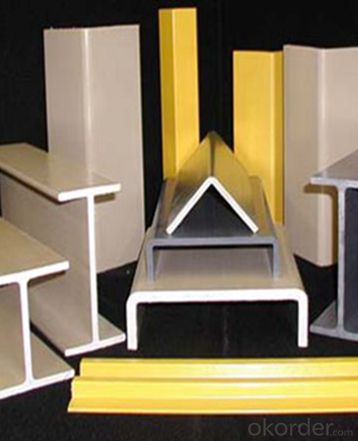
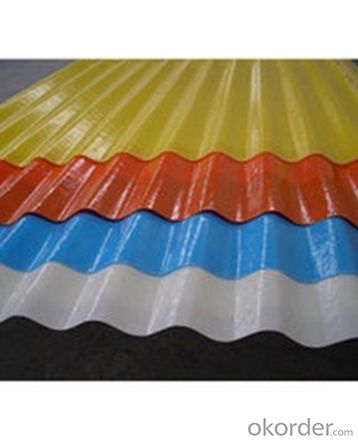
- Q:Are FRP pultrusion profiles resistant to moisture absorption?
- FRP pultrusion profiles possess remarkable resistance to moisture absorption, primarily due to the composition of the materials used in their construction. These profiles typically consist of a combination of fiberglass and resin, wherein fiberglass is naturally non-porous and impervious to moisture, while the resin is specifically designed to repel moisture. The moisture resistance of FRP profiles is further enhanced by the pultrusion manufacturing process. This process involves pulling the fiberglass and resin through a heated die, ensuring thorough impregnation of the fibers with resin and creating a dense and solid structure. Consequently, the resulting product exhibits exceptional resistance to water penetration and moisture absorption. Additionally, the moisture resistance of FRP pultrusion profiles can be augmented through the application of protective coatings or surface treatments, such as gel coats or UV-resistant finishes. These coatings provide an extra layer of defense against moisture ingress. The superior moisture resistance of FRP pultrusion profiles makes them an ideal choice for applications that involve exposure to water or high humidity, such as marine environments, wastewater treatment plants, or outdoor structures. By preventing issues like rot, rust, or degradation commonly associated with materials like wood or metal, these profiles offer a reliable and durable solution that can endure moisture exposure without compromising their structural integrity or performance.
- Q:Are FRP pultrusion profiles resistant to graffiti?
- FRP pultrusion profiles are generally resistant to graffiti due to their unique characteristics and composition. Pultruded fiberglass reinforced plastic (FRP) profiles are manufactured using a combination of high-strength fibers and a polymer resin matrix, resulting in a highly durable and robust material. One of the key advantages of FRP profiles is their excellent resistance to various forms of corrosion, including chemical, moisture, and UV resistance. These properties make FRP profiles less susceptible to the damaging effects of graffiti. Unlike traditional materials such as wood or metal, FRP pultrusion profiles do not provide a porous surface that allows paint or markers to penetrate and adhere easily. Additionally, FRP profiles are often produced with a smooth and non-porous finish, further deterring the attachment of graffiti. Even if graffiti is applied to the surface, it can be easily removed using non-abrasive cleaning methods without causing any damage to the profile's structural integrity or appearance. However, it is important to note that no material is completely immune to graffiti. Determined vandals may still find ways to leave marks on FRP profiles using specialized graffiti materials or techniques. Nonetheless, the resistance of FRP pultrusion profiles to graffiti is significantly higher compared to many other conventional materials, making them an ideal choice for areas prone to vandalism or graffiti attacks.
- Q:Are FRP pultrusion profiles resistant to electrical arcing?
- Generally, FRP pultrusion profiles exhibit resistance to electrical arcing due to their composition of non-conductive materials such as fiberglass reinforced plastic. By not conducting electricity, these profiles prove to be an optimal choice when concerns arise regarding electrical arcing and conductivity. Nevertheless, it is crucial to acknowledge that the extent of their resistance to electrical arcing may differ based on the unique composition and design of the FRP pultrusion profiles. Therefore, it is advisable to consult the manufacturer or supplier of the profiles to ensure they meet the specific electrical resistance standards required for a given application.
- Q:Are FRP pultrusion profiles resistant to fungal growth?
- Yes, FRP pultrusion profiles are highly resistant to fungal growth. The composite materials used in FRP pultrusion, such as fiberglass and resin, do not provide a suitable environment for fungi to grow. Additionally, the smooth surface of FRP profiles makes it difficult for fungi to attach and thrive. Hence, FRP pultrusion profiles are an excellent choice for applications where resistance to fungal growth is required.
- Q:What are the different types of FRP pultrusion profiles available?
- Some of the different types of FRP pultrusion profiles available include standard shapes such as I-beams, channels, angles, and tubes. Additionally, there are custom profiles that can be designed and manufactured based on specific project requirements.
- Q:What are the quality control measures for FRP pultrusion profiles?
- Quality control measures for FRP pultrusion profiles involve a series of steps and processes to ensure the products meet the desired standards. These measures include: 1. Raw material inspection: The first step is to verify the quality of the raw materials used in the pultrusion process. This includes checking the properties and specifications of the fiberglass, resin, additives, and other components. 2. Process control: Throughout the pultrusion process, various parameters need to be monitored and controlled. This includes maintaining consistent temperature, pressure, and resin content during the impregnation, forming, and curing stages. 3. Sample testing: Regular sampling is conducted during production to assess the quality of the profiles. These samples are tested for mechanical properties, dimensional accuracy, and surface finish to ensure they meet the required standards. 4. Visual inspection: Each profile is visually inspected to identify any defects, such as cracks, voids, delamination, or surface imperfections. Visual inspection helps to identify any irregularities that may affect the structural integrity or aesthetics of the profiles. 5. Mechanical testing: Profiles are subjected to mechanical testing to assess their strength, stiffness, and other mechanical properties. This involves conducting tests like flexural testing, tensile testing, impact testing, and compression testing. The results are compared to the specified requirements to determine if the profiles meet the necessary standards. 6. Quality documentation: Proper documentation is maintained throughout the manufacturing process, including records of raw material specifications, process parameters, test results, and inspection reports. This ensures traceability and provides a reference for quality assurance. 7. Non-destructive testing: In addition to mechanical testing, non-destructive testing techniques, such as ultrasonic testing or X-ray inspection, may be used to identify internal defects or inconsistencies without damaging the profiles. 8. Quality audits: Regular internal and external audits are conducted to assess the effectiveness of the quality control measures and ensure compliance with relevant industry standards and regulations. By implementing these quality control measures, manufacturers can ensure that FRP pultrusion profiles meet the required specifications, resulting in reliable and high-quality products.
- Q:What are the typical dimensions and sizes of FRP pultrusion profiles?
- The typical dimensions and sizes of FRP (Fiber Reinforced Polymer) pultrusion profiles can vary depending on the specific application and manufacturer. However, there are some common ranges that can be considered. In terms of dimensions, FRP pultrusion profiles usually have a length that can range from a few feet to several tens of feet, depending on the requirements of the project. The width or height of the profiles can vary significantly based on the intended use, but common dimensions often fall within the range of 0.5 inches to 12 inches. The size of FRP pultrusion profiles is determined by their cross-sectional area, which is typically measured in square inches. The cross-section can have various shapes, including rectangular, square, round, or custom designs. The typical sizes of FRP pultrusion profiles can range from as small as 0.1 square inches to as large as 100 square inches or more. It is important to note that FRP pultrusion profiles can be custom-made to meet specific project requirements. Manufacturers have the flexibility to produce profiles with unique dimensions and sizes, ensuring they are tailored to the particular needs of the application. Therefore, it is always advisable to consult with the manufacturer or supplier to determine the most suitable dimensions and sizes for a specific FRP pultrusion profile.
- Q:Can FRP pultrusion profiles be used in telecommunications towers?
- Yes, FRP (Fiber Reinforced Polymer) pultrusion profiles can be used in telecommunications towers. FRP pultrusion profiles offer several advantages that make them suitable for this application. Firstly, FRP profiles are lightweight yet strong, allowing for easy installation and reduced structural weight in telecommunications towers. This is important as it helps to minimize the overall weight load on the tower structure. Secondly, FRP pultrusion profiles have excellent corrosion resistance properties, making them ideal for outdoor applications like telecommunications towers, which are exposed to various environmental conditions. Unlike traditional materials such as steel or wood, FRP profiles do not rust, rot, or degrade when exposed to moisture, UV radiation, or chemicals typically found in outdoor environments. Additionally, FRP pultrusion profiles offer excellent electrical insulation properties, which is crucial in telecommunications towers. These profiles do not conduct electricity, reducing the risk of electrical interference or short circuits that could disrupt the tower's communication systems. Furthermore, FRP pultrusion profiles can be manufactured in various shapes and sizes, allowing for customization and meeting specific design requirements of telecommunications towers. This versatility allows for better integration and compatibility with other tower components. Overall, the combination of lightweight, high strength, corrosion resistance, electrical insulation, and customization options make FRP pultrusion profiles a viable and advantageous choice for use in telecommunications towers.
- Q:How do FRP pultrusion profiles perform in high-vibration applications?
- FRP pultrusion profiles perform exceptionally well in high-vibration applications. Due to their inherent structural properties, including high strength-to-weight ratio and excellent fatigue resistance, they can effectively withstand and dampen vibrations without compromising their integrity or performance. Additionally, their non-corrosive nature makes them ideal for long-term use in high-vibration environments, providing enhanced durability and reliability.
- Q:Are FRP pultrusion profiles resistant to saltwater corrosion?
- Indeed, FRP pultrusion profiles exhibit exceptional resistance to saltwater corrosion. Their corrosion resistance is a significant advantage over traditional materials like steel or aluminum. The combination of reinforcing fibers and resin matrix in FRP profiles endows them with inherent resistance to the corrosive effects of saltwater. FRP profiles consist of a blend of glass or carbon fibers that are embedded in a thermosetting resin. These constituents do not chemically react with saltwater, effectively preventing the corrosion commonly observed in metals exposed to saltwater for prolonged periods. Additionally, the resin matrix utilized in FRP profiles acts as a protective barrier, further impeding saltwater from reaching the reinforcing fibers. The corrosion resistance of FRP pultrusion profiles renders them exceptionally suitable for applications in marine settings. Seawalls, dock fenders, offshore platforms, and marine vessels frequently employ FRP profiles due to their durability in saltwater environments. This durability guarantees long-term performance and minimizes the necessity for frequent maintenance or replacement. However, it is crucial to acknowledge that although FRP pultrusion profiles demonstrate high resistance to saltwater corrosion, they can still be influenced by other factors like UV radiation or chemical exposure. Consequently, it is vital to consider the precise environmental conditions and consult manufacturers or experts to select the most appropriate FRP profile for a given application.
1. Manufacturer Overview |
|
|---|---|
| Location | |
| Year Established | |
| Annual Output Value | |
| Main Markets | |
| Company Certifications | |
2. Manufacturer Certificates |
|
|---|---|
| a) Certification Name | |
| Range | |
| Reference | |
| Validity Period | |
3. Manufacturer Capability |
|
|---|---|
| a)Trade Capacity | |
| Nearest Port | |
| Export Percentage | |
| No.of Employees in Trade Department | |
| Language Spoken: | |
| b)Factory Information | |
| Factory Size: | |
| No. of Production Lines | |
| Contract Manufacturing | |
| Product Price Range | |
Send your message to us
FRP pultruded grating with Anti-corrosion and anti-rust and best quality on sales
- Loading Port:
- Tianjin
- Payment Terms:
- TT OR LC
- Min Order Qty:
- 5000 m.t.
- Supply Capability:
- 100000 m.t./month
OKorder Service Pledge
OKorder Financial Service
Similar products
New products
Hot products
Related keywords
